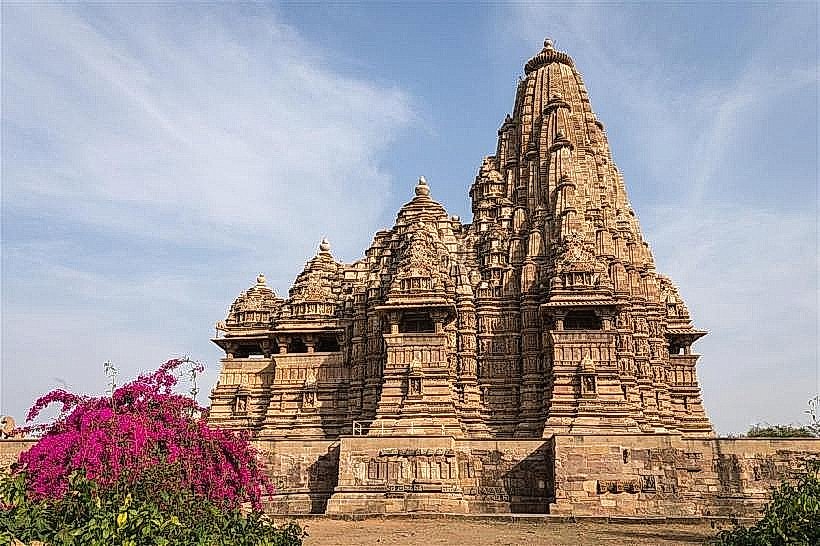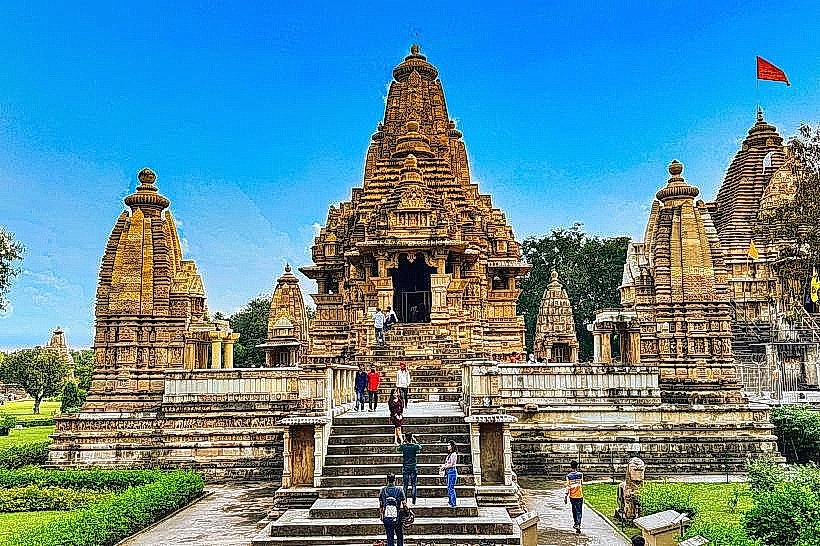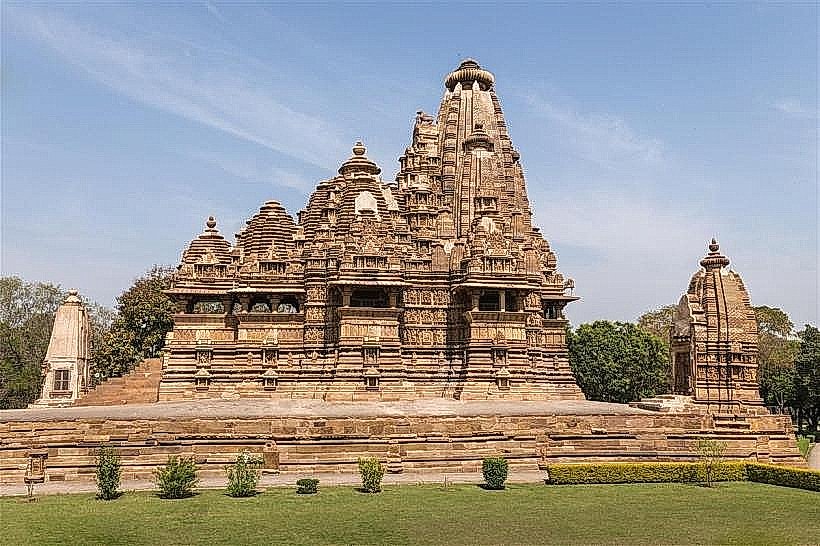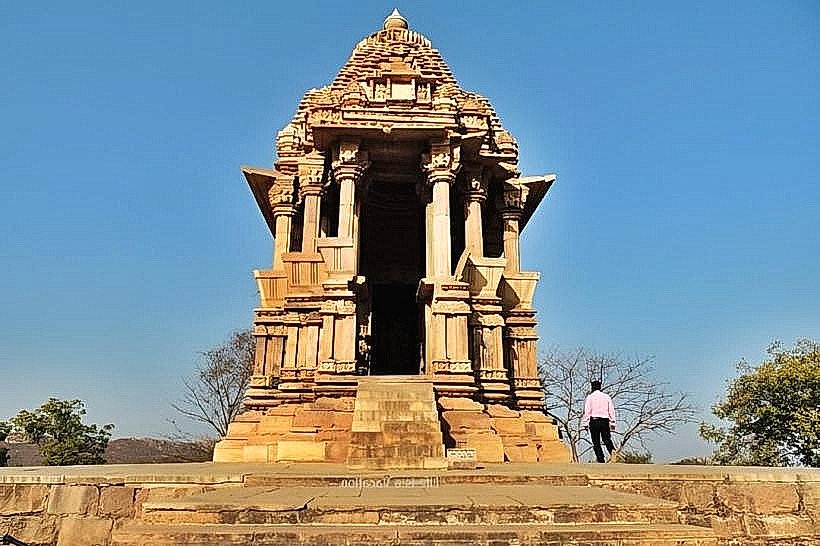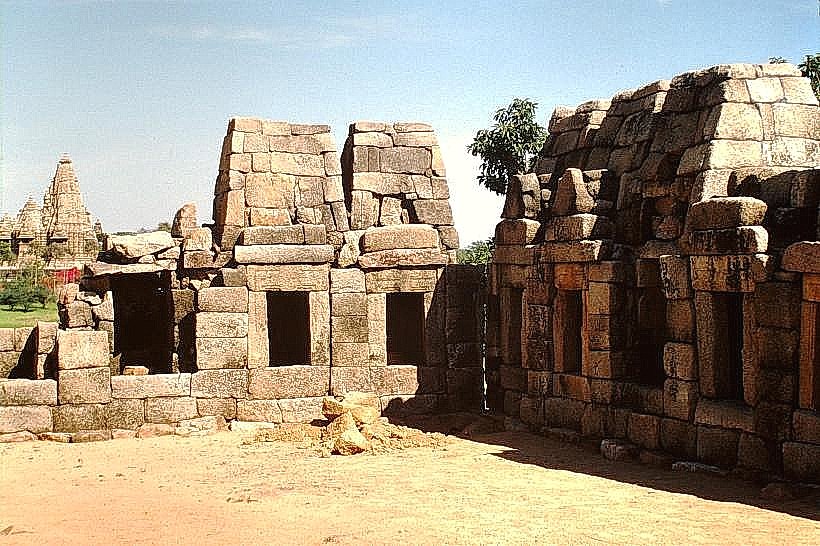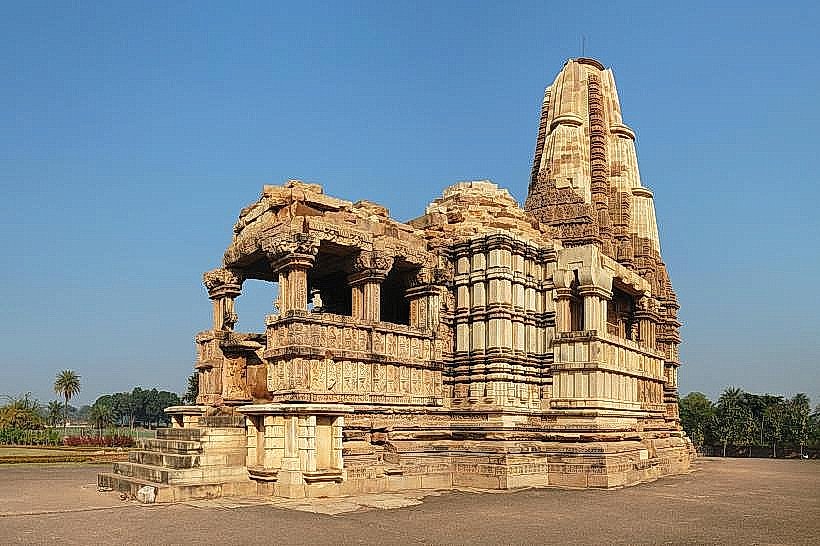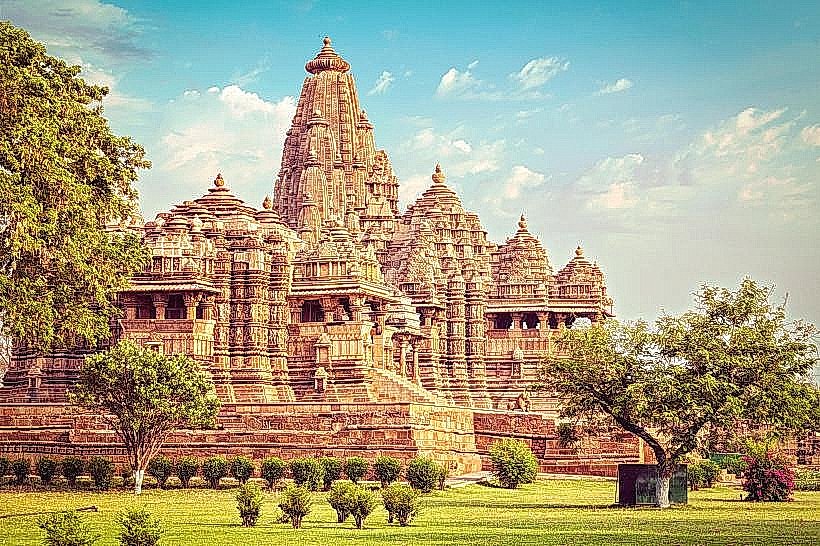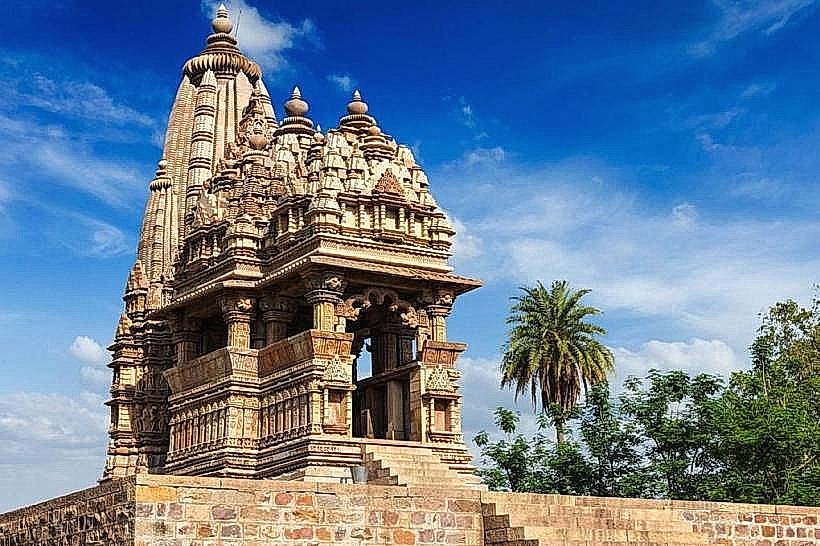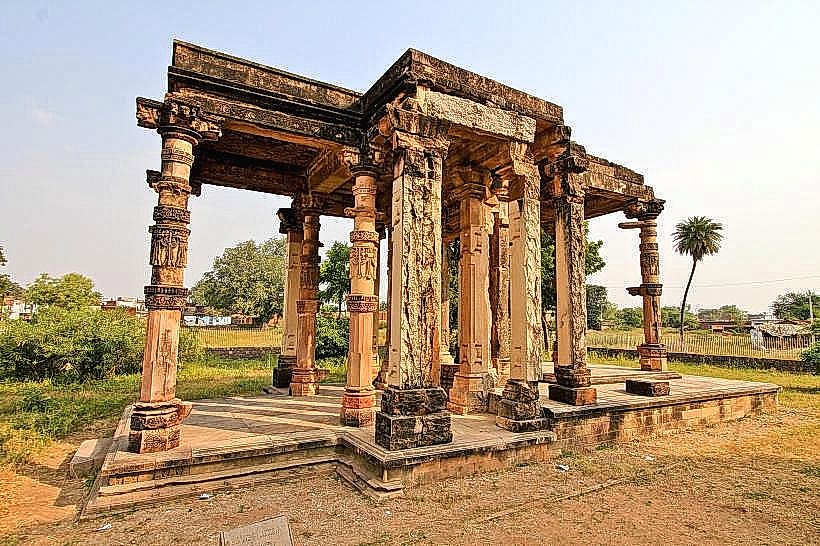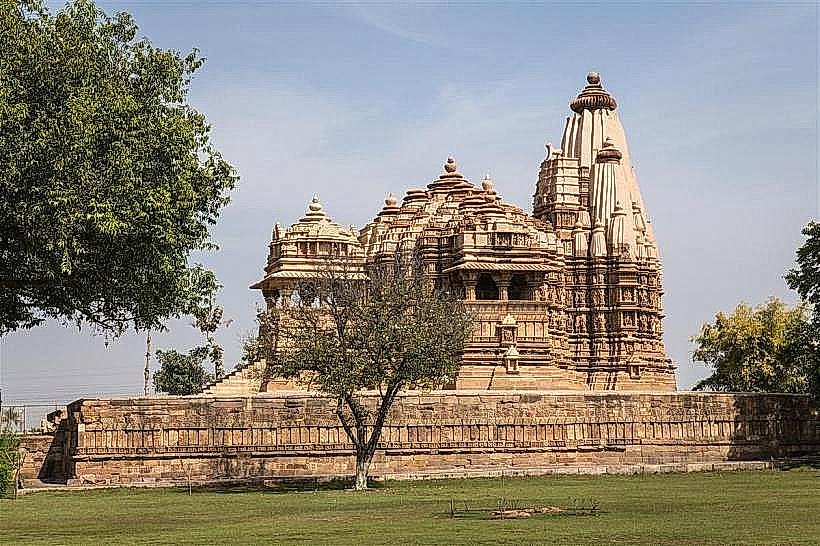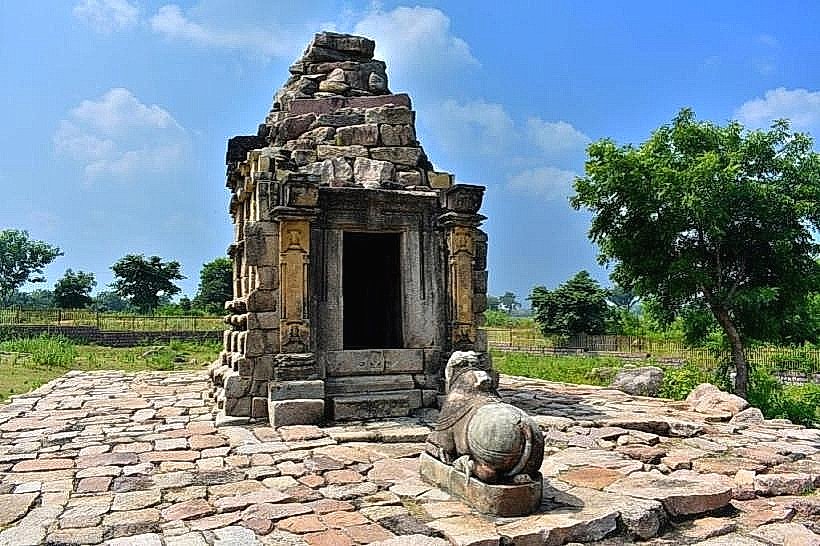Information
Landmark: Vamana TempleCity: Khajuraho
Country: India
Continent: Asia
Vamana Temple, Khajuraho, India, Asia
Overview
The Vamana Temple in Khajuraho, Madhya Pradesh, stands among the eastern group of monuments, a Hindu shrine devoted to Lord Vishnu’s Vamana-his dwarf form-whose sculpted figure seems to stride through the cool stone shadows, not only that raised in the 10th–11th century CE under the Chandela dynasty, it blends sacred symbolism, graceful artistry, and the elegant stonework that defines Khajuraho’s temples-each carving catching light like water on polished granite.Built from warm sandstone, the Vamana Temple showcases classic Nagara-style architecture, with a quiet garbhagriha at its center, a pillared mandapa opening before it, and a graceful curving shikhara rising overhead, then the temple stands on a raised plinth, its stone base lifting it above the courtyard and drawing every eye in the eastern complex.The mandapa is petite, its finely carved pillars catching light like ripples on stone; the compact sanctum draws every gaze toward the central deity, furthermore the shikhara lifts in the classic Khajuraho style, its tiny spires (urushringas) climbing one above another like a stone melody, creating a vivid sense of height even though the temple itself is compact, partially The walls of Vamana Temple rise like carved stone tapestries, filled with images of Vishnu in many forms, graceful apsaras frozen mid-dance, and delicate patterns etched deep into the surface, on top of that sculpted panels and carved scenes tell how Vishnu, in his dwarf form as Vamana, strides across the cosmos to reclaim it from the proud demon king Bali.Here, the focus shifts to devotion and myth-to stories carved in stone-rather than the sensual scenes decorating the neighboring temples, to boot the figures stand in graceful poses, their garments drifting like soft fabric in motion, and every curve of jewelry gleams with intricate detail-a clear reflection of the Chandela artisans’ refined skill and eye for beauty.Inside the quiet sanctum, worshippers honor Vishnu in his Vamana form, though the original stone idol may have shifted from its spot long ago, as well as the sanctum stays deliberately bare, its stone walls cool to the touch, designed to keep every thought centered on quiet spiritual reflection.Tiny alcoves might hold guardian gods or carved emblems-a flicker of gold paint or cool stone-quietly deepening the temple’s sacred story, along with at the Vamana Temple, visitors find a calm, reflective space where its modest size invites them to step closer, tracing the cool stone carvings and noticing each subtle architectural curve.From the raised plinth, you can take in the temple’s soaring shikhara, and as you stroll slowly around it-the scent of stone dust in the air-the rhythm of its carvings unfolds in full, besides the carvings glow under the soft light of morning or the slanting rays of late afternoon, and the nearby eastern temples frame the scene, revealing how Khajuraho’s architecture evolved over time, under certain circumstances In a way, The Vamana Temple shows how deeply the Chandela dynasty embraced Vaishnavism, its carved sandstone walls standing beside Shaiva and Jain shrines that together reveal Khajuraho’s rich religious diversity, to boot its clear design, sculpted grace, and storytelling detail capture the essence of the medieval temple tradition that flourished in central India, where stone walls still glow warm in the late sun, relatively At the Vamana Temple, visitors step into a space where mythic tales meet graceful stonework and quiet devotion, offering a glimpse into the faith and artistry that shaped 10th–11th century Khajuraho.
Author: Tourist Landmarks
Date: 2025-11-19

